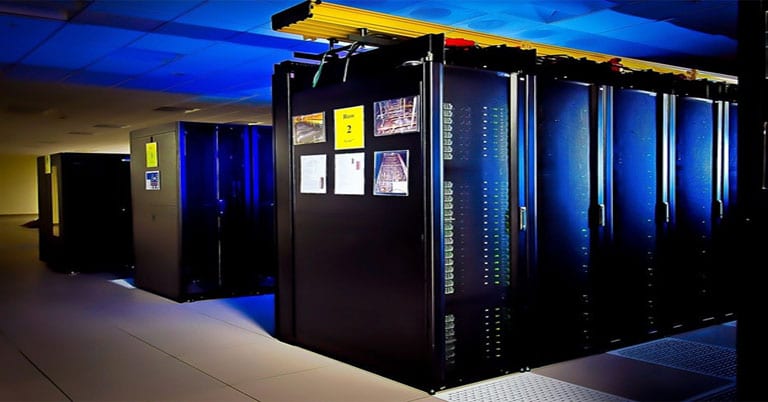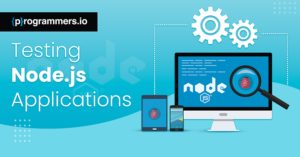The world is hastening towards digitization and automation, making enormous changes to the world we know. As 2020 concludes, the exponential growth in technology will continue and we will see more innovative tools and technologies.
Historically, software testing, just like other IT fields, has consistently innovated and revamped itself to discover better solutions and lay down optimized practices to produce high-quality software.
Unsurprisingly, new technology has brought several changes in software testing, as well. In this article, we will explore what’s new in the world of testing and find out how testers are coping with the increasing complexity of systems, environments, and data.
What Technologies Should You Look Out for?
Businesses are always eager to cut down costs and make their processes as efficient and effective as possible. New technologies give them this opportunity and allow them to scale, adapt, and optimize to growing needs.
According to Statista, Big Data/Analytics, DevOps, AI, and Machine Learning are the foremost technologies businesses that want to implement in the near future. Notably, as these technologies become the norm, they are also seeping into software testing.

Let us see how these technologies are influencing software testing:
Agile and DevOps for Testing
The demand for speed in software industry has pushed companies to adopt Agile and DevOps rapidly. These approaches give companies space to adapt to changing requirements and deliver usable components of software incrementally.
DevOps specifically enables organizations to augment development with operations and significantly reduce the time spent in development. However, the push for speed has also drawn a question mark on quality.
To counter this, QA teams aligned to DevOps and refined their approach to speed up development and testing. They leverage test automation to ensure nearly 100% code coverage and automate all major test cases.
At the same time, they must standardize their environments and automate QA deployment. Finally, they must align clean-ups, pre-testing tasks, and post-testing tasks with the Continuous Integration cycle and automate them accordingly.
Analytics, Artificial Intelligence and Machine Learning for Testing
AI and ML have long been used in software research to discover new solutions and find ways to optimize existing systems; however, now the technology has found its way into software testing.
AI and machine learning solutions thrive on large amounts of data. With testing companies accumulating large amounts of data, the scope of AI and machine learning is increasing exponentially in testing.
By using ML algorithms on swathes of testing data we can gain interesting insights into why certain functions are misbehaving. Although AI for testing is still in its early stages, there are many ways AI and ML can optimize testing practices.
For instance, we can use AI and ML to generate improved test data, test scripts, test reports, and cases. Intelligent models can help us make testing decisions more accurately, telling us where, what, and when to test. Likewise, advanced data visualization and analytics can help us detect faults, identify areas with high risk, and scale test coverage to 100%.
New Testing Challenges
Test Environments and Data
With technologies like the Internet of Things (IoT) evolving, software systems must operate in increasingly different environments. The lack of data on new test environments makes it difficult for teams to apply agile and DevOps effectively. As a result, testing teams struggle to balance how much test coverage will be ideal.
Therefore, we can expect containerized and cloud-based test environments to become more popular in the future. Combined with AI-driven solutions, we can generate test data and create contingencies for the lack of test data in certain testing environments.
ERP Mainframe Testing
Many people consider mainframes a relic of the past. However, in reality, they are a major part of infrastructure for Enterprises. Unlike super computers that are specialized for heavy number crunching, mainframes are ideal for processing thousands, (if not even millions) of I/O commands and transactions.
This is why many enterprises rely on these large and powerful machines to process their transactions quickly. ERP mainframe applications are responsible for supporting most of the processes within enterprises. However, testing these applications is often too challenging for software companies.
According to one study, over 1/3rd of IT leaders admit developing and testing mainframe application code is increasingly difficult. Consequently, they struggle to improve quality, speed, and efficiency of their processes.
According to them, manual testing is the greatest challenge against ERP mainframe testing. 90% of respondents regarded test automation essential for accelerating innovation. Likewise, in another survey, 82% of respondents claimed that automating more test cases is the only way to meet the growing need for speed and innovation in enterprises.
As we find new tools to improve test automation, we can expect ERP mainframe testing to become easier to execute and master. Below are some of the tools that can help you with ERP mainframe testing.
Best Tools for Test Automation in 2021
Apache JMeter
JMeter is regarded as one of the best open-source load testing tools in the market. Focusing on web applications, the tool helps you simulate load testing environments effectively, making it easier to test applications with high I/O requests and transactions.
Jest
Jest is an advanced testing tool designed for testing JavaScript code and related libraries, including React. The tool gives users an integrated “zero-configuration” experience; something not many testing tools offer.
Engineers with ready-to-use tools are more likely to write to more tests as they have fewer additional burdens, resulting in more stable code bases. At the same time, it also parallelizes test runs, making it easier for testers to automate test cases and achieve greater test coverage Unsurprisingly, Facebook uses this tool for testing.
Mocha
Mocha is another JavaScript-derived framework aimed at Node.js. It’s one of the few testing tools that facilitate asynchronous testing, allowing users to leverage assertion libraries of their choice for testing code.
You can leverage several async related features, such as async test timeout support and simple async support (including promises). At the same time, it enables you to use after each, after, before each, and before hooks to clean your testing environment efficiently.
Although Facebook developers favor Jest for writing automated tests for React applications, Jest’s slower speed and confusing mocking makes it bad for some situations. Although Mocha’s configuration is a little hard, it resolves all the main issues Jest suffers from.
Chai
Mocha gives you a great environment for creating tests. However, performing unique tests, such as testing HTTP calls, is still a problem. Likewise, finding out if a GET request is returning the JSON file we want according to our input is difficult without an assertion library.
This is where Chai comes in. It allows us to choose the interface we want, from “assert”, and “expect” to “should”, Chai offers them all. By integrating the Chai HTTP addon, you can leverage the Chai library to implement assertions on HTTP requests based on our needs.
Conclusion
As technology advances, we have the opportunity to augment new solutions to our testing strategy. By using advanced tools and finding innovative ways to improve existing testing processes, we can greatly improve the quality of our products.




